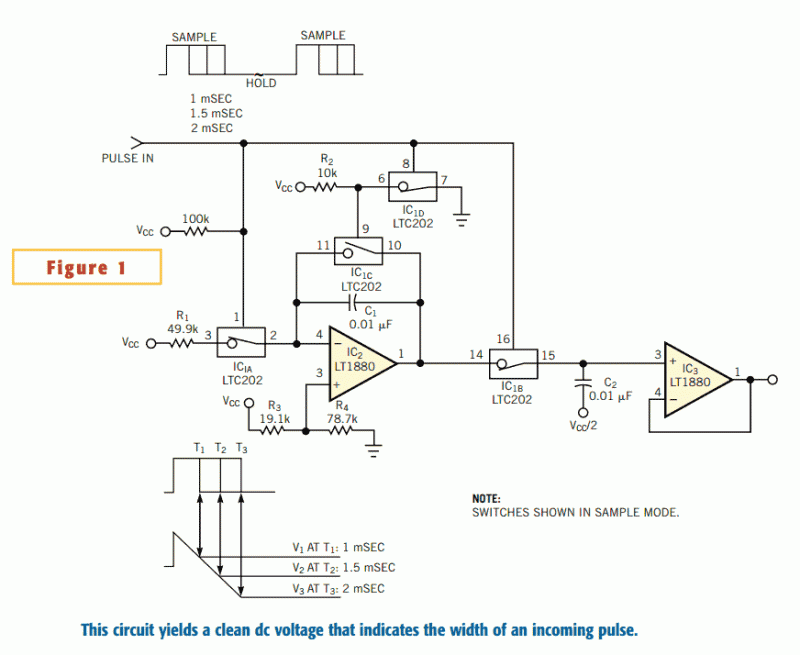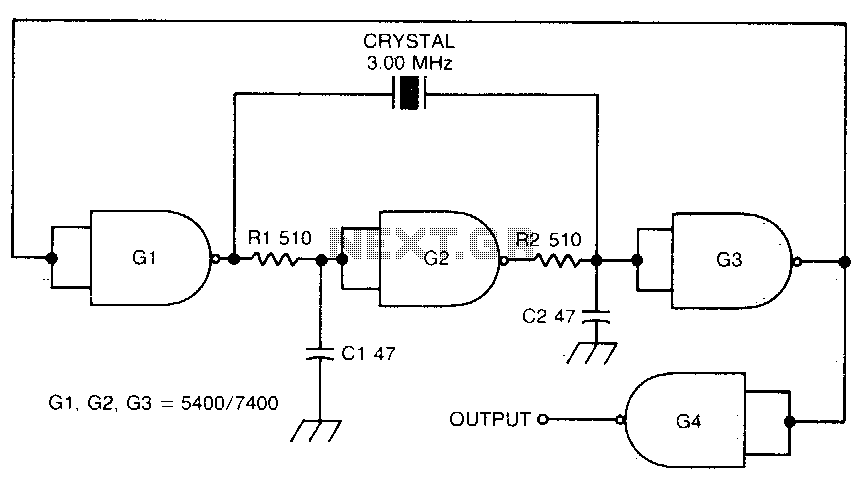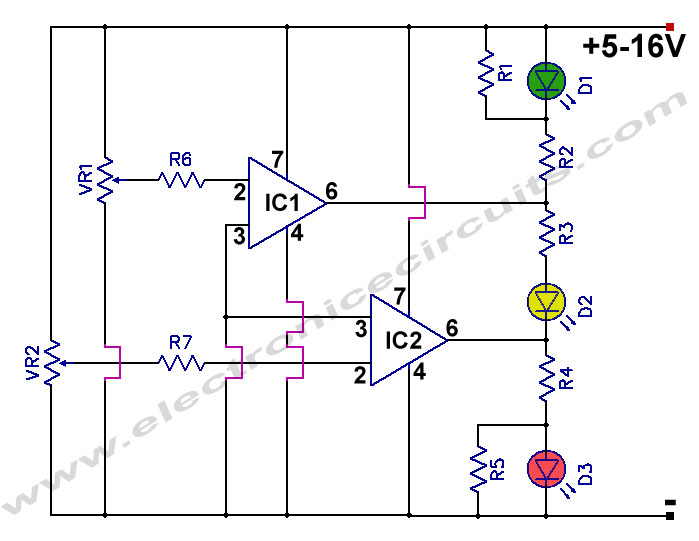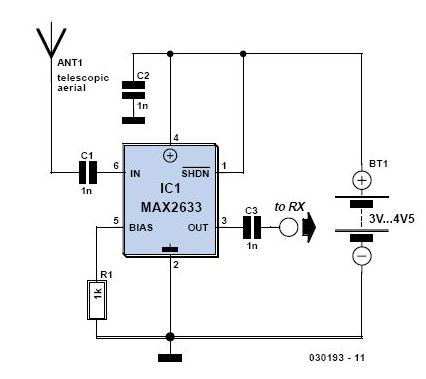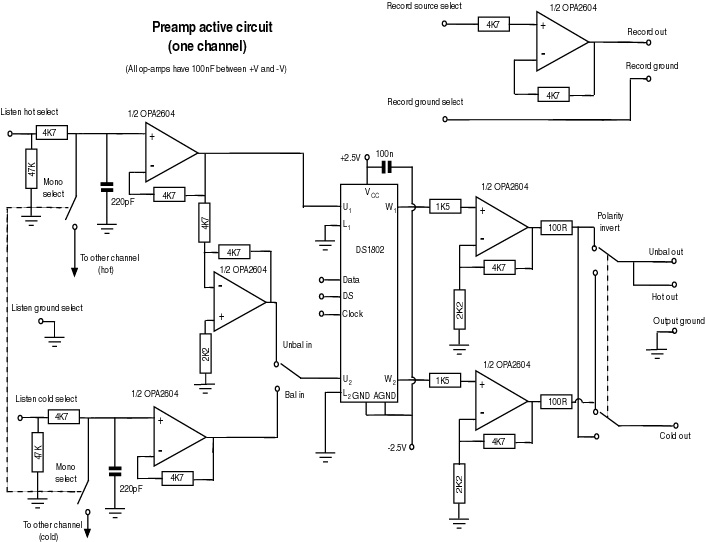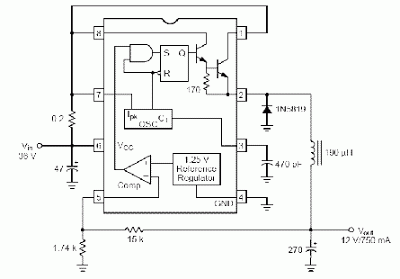
Bass And Treble Controller Circuit Based On The Classic Baxandall Tone Control Circuitry
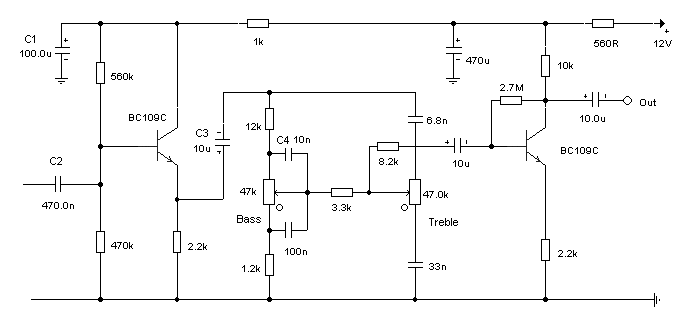
The following circuit illustrates a Bass and Treble Controller Circuit. This circuit is constructed based on the classic Baxandall tone control circuitry.
The Bass and Treble Controller Circuit is designed to adjust the low and high-frequency response of audio signals, allowing for enhanced sound quality and tailored audio experiences. The circuit typically employs operational amplifiers (op-amps) configured in a feedback arrangement to achieve the desired tone control characteristics.
The classic Baxandall configuration utilizes two primary stages: one for bass control and another for treble control, each incorporating variable resistors (potentiometers) to adjust the gain of the respective frequency bands. The circuit generally includes capacitors to filter specific frequency ranges, ensuring that the adjustments made do not adversely affect the overall audio signal integrity.
In a typical implementation, the bass control section may consist of a low-pass filter, which allows frequencies below a certain threshold to pass while attenuating higher frequencies. Conversely, the treble control section functions as a high-pass filter, allowing frequencies above a designated point to be amplified while reducing lower frequencies.
The output of the circuit is designed to be connected to a power amplifier or directly to a speaker system, enabling users to modify their audio output dynamically. The use of high-quality components, such as low-tolerance resistors and capacitors, is recommended to maintain fidelity and minimize noise in the audio signal.
This circuit is particularly valuable in audio applications where user preference for low and high frequencies can significantly impact the listening experience, making it a staple in both consumer electronics and professional audio equipment.The following circuit shows about Bass And Treble Controller Circuit. This circuit built based on the classic Baxandall tone control circuitry .. 🔗 External reference
The Bass and Treble Controller Circuit is designed to adjust the low and high-frequency response of audio signals, allowing for enhanced sound quality and tailored audio experiences. The circuit typically employs operational amplifiers (op-amps) configured in a feedback arrangement to achieve the desired tone control characteristics.
The classic Baxandall configuration utilizes two primary stages: one for bass control and another for treble control, each incorporating variable resistors (potentiometers) to adjust the gain of the respective frequency bands. The circuit generally includes capacitors to filter specific frequency ranges, ensuring that the adjustments made do not adversely affect the overall audio signal integrity.
In a typical implementation, the bass control section may consist of a low-pass filter, which allows frequencies below a certain threshold to pass while attenuating higher frequencies. Conversely, the treble control section functions as a high-pass filter, allowing frequencies above a designated point to be amplified while reducing lower frequencies.
The output of the circuit is designed to be connected to a power amplifier or directly to a speaker system, enabling users to modify their audio output dynamically. The use of high-quality components, such as low-tolerance resistors and capacitors, is recommended to maintain fidelity and minimize noise in the audio signal.
This circuit is particularly valuable in audio applications where user preference for low and high frequencies can significantly impact the listening experience, making it a staple in both consumer electronics and professional audio equipment.The following circuit shows about Bass And Treble Controller Circuit. This circuit built based on the classic Baxandall tone control circuitry .. 🔗 External reference
